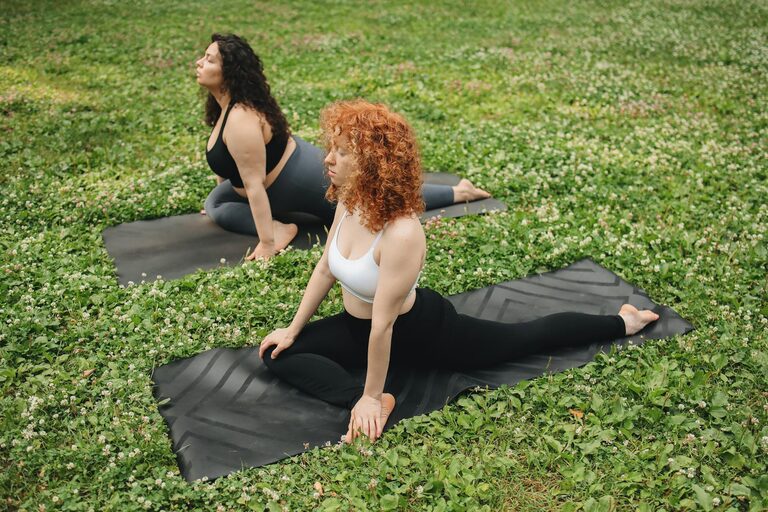Mindfulness has become a popular way to bring calm and clarity to our busy lives. But you don’t need to spend hours meditating or attend special classes to enjoy its benefits. Simple mindfulness practices can easily fit into your daily routine, helping you reduce stress, improve focus, and feel more connected to the present moment.
In this post, we’ll explore practical ways to incorporate mindfulness into everyday life, with clear steps and tips for beginners and seasoned practitioners alike.
What Is Mindfulness?
Mindfulness means paying attention to the present moment with openness and without judgment. Instead of letting your mind wander to worries about the past or future, mindfulness encourages you to notice what is happening right now—your thoughts, feelings, sensations, and surroundings.
This shift in awareness can help you respond to challenges with greater calm and clarity, rather than reacting impulsively.
Why Practice Mindfulness Daily?
Making mindfulness a part of your daily life offers many benefits, including:
– Stress reduction: Mindfulness lowers cortisol, the stress hormone, and promotes relaxation.
– Improved focus: Training your attention improves concentration and productivity.
– Emotional balance: Mindfulness helps regulate emotions and increase resilience.
– Better sleep: Mindful habits can calm the mind and support restful sleep.
– Greater well-being: Engaging fully with life tends to increase feelings of joy and contentment.
The great news is that mindfulness doesn’t require a large time commitment. Even a few minutes a day can make a difference.
Simple Mindfulness Practices to Try
1. Mindful Breathing
Breathing is a natural anchor to the present moment. To practice mindful breathing:
– Find a comfortable sitting position.
– Close your eyes or soften your gaze.
– Take slow, deep breaths in through your nose and out through your mouth.
– Focus your attention on the sensation of the air entering and leaving your lungs.
– If your mind wanders, gently redirect it back to your breath.
Try this for 1 to 5 minutes several times a day, especially when you feel stressed or distracted.
2. Body Scan
A body scan helps you connect with physical sensations and release tension.
– Lie down or sit comfortably.
– Slowly bring your attention to different parts of your body, starting at your toes and moving upward.
– Notice any sensations—tightness, warmth, tingling—without trying to change them.
– If you find areas of discomfort, breathe into those places and imagine the tension softening.
The body scan can be practiced in about 10 minutes, making it a great way to wind down before bed.
3. Mindful Eating
Eating mindfully turns mealtime into a calming, enjoyable experience.
– Eat one meal or snack without distractions (no phone, TV, or reading).
– Observe the colors, smells, and textures of your food.
– Take small bites and chew slowly.
– Notice the flavors and how the food feels in your mouth.
– Check in with your hunger and fullness levels to eat intentionally.
This practice cultivates gratitude and a healthier relationship with food.
4. Single-Tasking
Modern life often encourages multitasking, which scatters attention and increases stress.
– Choose one task at a time to focus on.
– Set aside distractions and give your full attention to what you’re doing.
– Whether it’s washing dishes, writing an email, or walking, notice your movements and surroundings.
– When your mind drifts, kindly bring it back to the task.
Single-tasking helps improve productivity and presence.
5. Mindful Walking
Walking can become a moving meditation.
– Walk slowly and deliberately.
– Feel your feet connecting with the ground.
– Notice the movement of your legs, arms, and body.
– Observe your environment—the colors, sounds, smells.
– Breathe naturally and stay present with the experience.
You can do this on a short walk around your home or during a longer stroll outdoors.
6. Gratitude Pause
Practicing gratitude can shift your mindset and increase positive feelings.
– Pause during your day to think of 2 or 3 things you’re thankful for.
– It could be something simple—a warm cup of tea, a kind word, or sunshine.
– Fully experience the feeling of gratitude as you reflect.
– Consider keeping a gratitude journal to record these moments.
Even brief pauses like this boost well-being.
Tips for Building a Mindfulness Habit
– Start small: Begin with just a few minutes each day and gradually increase.
– Create reminders: Use alarms, notes, or apps to prompt mindfulness practice.
– Be patient: It’s normal for your mind to wander; bring your focus back gently.
– Use daily activities: Incorporate mindfulness into tasks you already do, like brushing teeth or commuting.
– Join a community: If you enjoy group support, consider local or online mindfulness groups.
Conclusion
Mindfulness doesn’t have to be complicated or time-consuming. By integrating these simple practices into your daily life, you can cultivate greater calm, clarity, and joy. Start with one or two techniques and see what works best for you.
Remember, mindfulness is a skill that grows with regular practice. Every moment you bring your attention to the present is a step toward a more peaceful and fulfilling life.
Try these simple mindfulness exercises today and notice the positive changes they bring to your everyday experience.

